Visitors keep bouncin'? There are many methods and a few simple steps to take which will improve your plight. We've rounded up the 10 best ways to reduce your bounce rate below:

The bounce rate measures the percentage of users who visit a website but they leave the site after viewing one page. The number can be found in Google Analytics.
You want people to visit your website and think "this looks interesting, let's stay here and look around," but if they don't like what they see and decide to click the back button instead, they are bouncing off.
High = people are unengaged by irrelevant content
Low = people are engaged by relevant content
The longer a user stays on your website means they will more likely want to buy a product or service.
How to reduce bounce rate
1. Create useful landing pages
Create pages that have relevant content and are useful to the user. If your content isn't useful, why would they want to stay?

2. Engaging content
Create pages and blog posts with interesting content. Your content needs to be engaging. Imagine your website is a book and you're trying to keep your reader from putting the book down. Writing content can be easy but writing content that people actually want to read can be a challenge. Engage by creating content that answers questions and offers helpful and relevant information.
3. Images
People like pictures. They can be rewarding to look at and they can instantly engage with the reader. Images of wondrous locations or engaging people can have a positive effect on your visitors. Pleasing images can make people stay longer because they are immersed by the experience of your website.

4. Create relevant Call-to-Actions (CTA)
Call-to-Actions are created to persuade someone to make an action. Do you want your visitor to download, sign up or fill out a contact form? Make sure the CTA is relevant to the content on the page. Your visitor is on a certain page for a reason, create a Call-to-Action that answers their need.
5. Optimisation
With more people using mobiles and tablets to surf the internet your website needs to be able to optimise to any device. Make sure your website is friendly to mobile and tablet users.
6. Speed
Remember back in the day when we would sit patiently and wait for a page to load. Well, those days of patience are over. If your website takes 10 seconds to load, the likelihood is a visitor won't wait until the page has loaded and will just look elsewhere instead.
7. Easy navigation
Make your website clear and easy to follow. Having a sitemap is a useful way for people to navigate your site easily but make sure your tabs and pages are clearly labeled so your site visitors know what is going on.

8. More pages
The bigger the website, the more likely a person will stay on your site because they have more to explore. With this step it's also important to keep your content relevant and engaging. Take some time to plan and question what types of pages your website would benefit from.
9. Make it pretty
You can usually tell if you have landed on an old and abandoned website. The layout is basic and the graphics are poor. Design your website with interesting images. Cool slideshows and interactive images can do wonders!

10. Understand your audience
You need to understand your audience. Understand what they are thinking when they arrive on your site. Are they looking for a service or a product? Perhaps they are just browsing but are willing to be persuaded by good content. Your website needs to be crafted to interact with your audience at different stages of their buying journey.
When your visitors land on your website you need to answer their questions or persuade them effectively.
Inbound marketing helps you understand your audience and create marketing strategies that are relevant. This method of marketing helps to keep visitors on your website and wanting to return in the future.
Download our FREE eBook to see how Inbound Marketing can benefit your website and keep down your bounce rate!
What other ways would you recommend to keep your bounce rate down? Share your advice in the comments below.
Real Growth. Real Impact.
The new Google Analytics 4 (GA4) update: What it means for you
You just got sucker punched by an AR Tom Cruise!
We come in peace, Homo ARpiens!
Custom objects give HubSpot CRM superpowers
What works now: HubSpot reporting on Covid-19 effects and actions
Pexip: Build your website on user data not guesswork
Is my website's bounce rate too high? [industry benchmark data]
See why enterprises choose Avidly
Let’s build your HubSpot success story
Compelling final call to action - with accompanying link to Contact page






